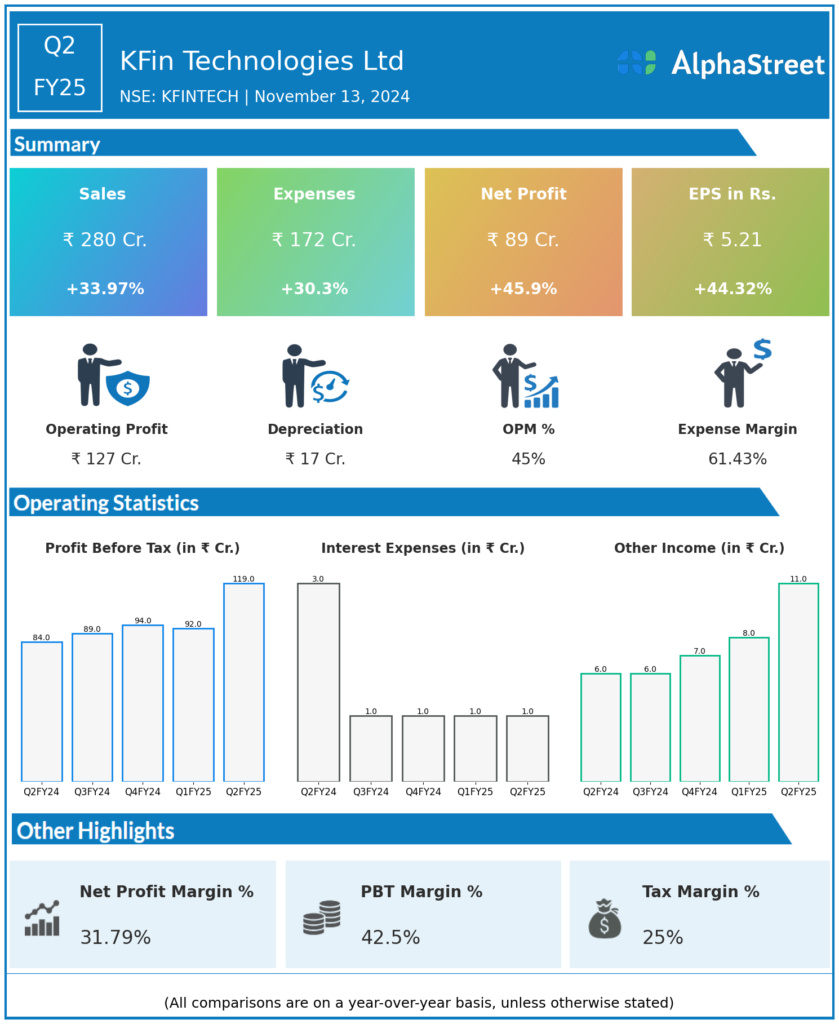KFin Technologies Limited is a leading technology-driven financial services platform. The company provides services and solutions to asset managers and corporate issuers across asset classes in India and provides several investor solutions including transaction origination and processing for mutual funds and private retirement schemes in Malaysia, the Philippines and Hong Kong.
Financial Results:
KFin Technologies Ltd reported Revenues for Q2FY25 of ₹280.00 Crores up from ₹209.00 Crore year on year, a rise of 33.97%.
Total Expenses for Q2FY25 of ₹172.00 Crores up from ₹132.00 Crores year on year, a rise of 30.3%.
Consolidated Net Profit of ₹89.00 Crores up 45.9% from ₹61.00 Crores in the same quarter of the previous year.
The Earnings per Share is ₹5.21, up 44.32% from ₹3.61 in the same quarter of the previous year.

*It is important to note that the way the results have been accounted for are slightly different than the ones the companies may choose to publish.
*The presented data is automatically generated. It may occasionally generate incorrect information.
